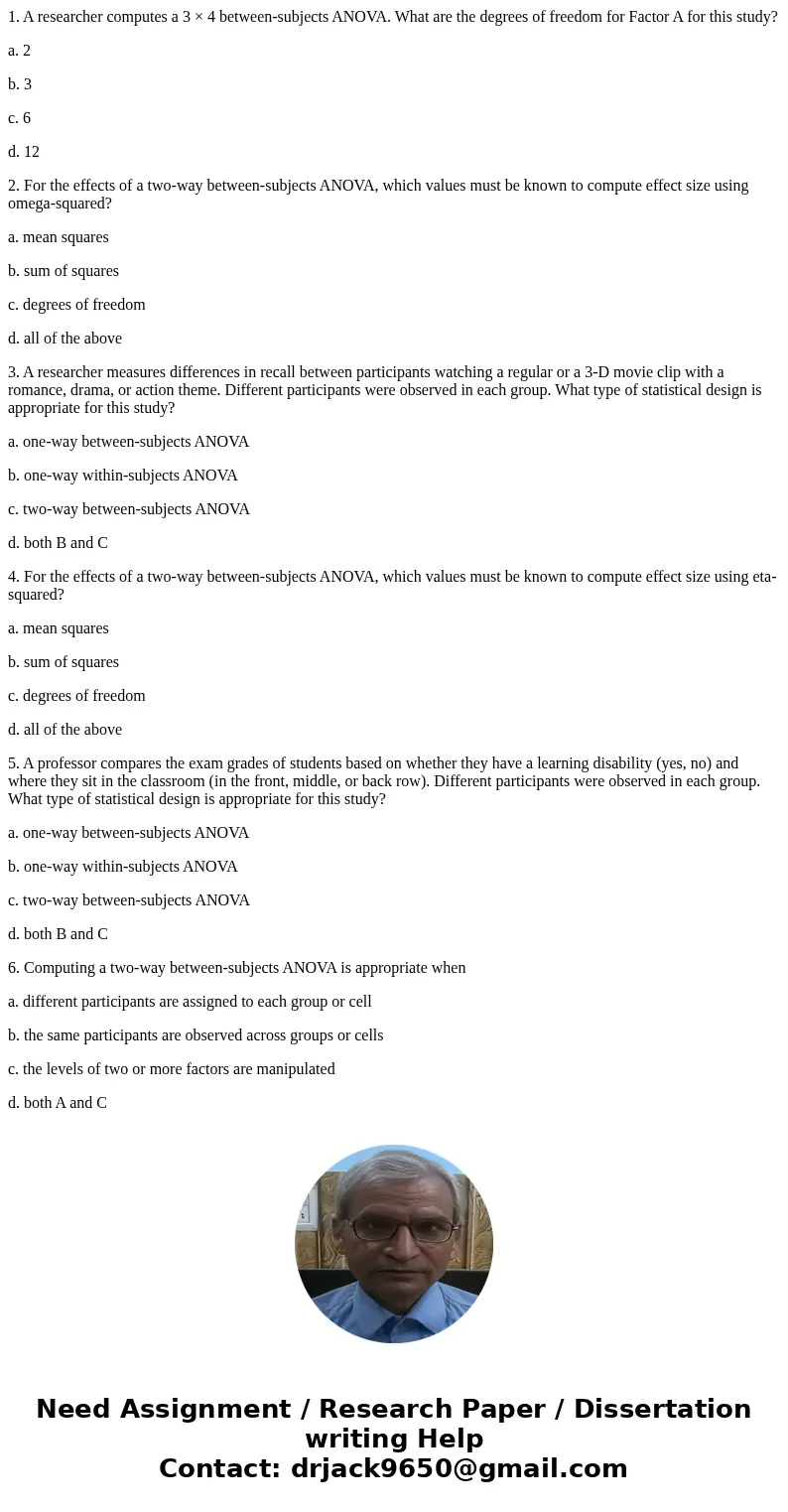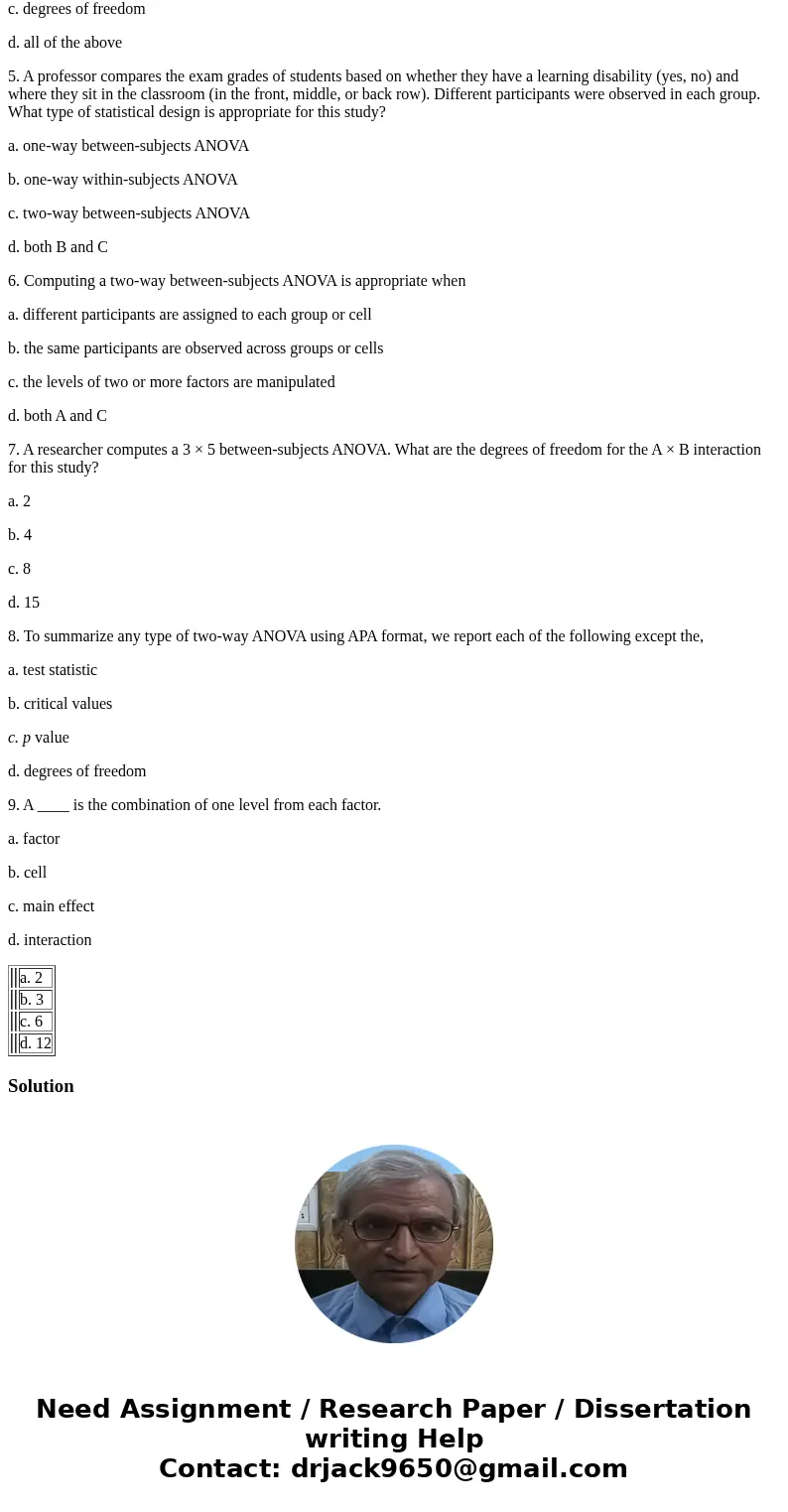1 A researcher computes a 3 4 betweensubjects ANOVA What ar
1. A researcher computes a 3 × 4 between-subjects ANOVA. What are the degrees of freedom for Factor A for this study?
a. 2
b. 3
c. 6
d. 12
2. For the effects of a two-way between-subjects ANOVA, which values must be known to compute effect size using omega-squared?
a. mean squares
b. sum of squares
c. degrees of freedom
d. all of the above
3. A researcher measures differences in recall between participants watching a regular or a 3-D movie clip with a romance, drama, or action theme. Different participants were observed in each group. What type of statistical design is appropriate for this study?
a. one-way between-subjects ANOVA
b. one-way within-subjects ANOVA
c. two-way between-subjects ANOVA
d. both B and C
4. For the effects of a two-way between-subjects ANOVA, which values must be known to compute effect size using eta-squared?
a. mean squares
b. sum of squares
c. degrees of freedom
d. all of the above
5. A professor compares the exam grades of students based on whether they have a learning disability (yes, no) and where they sit in the classroom (in the front, middle, or back row). Different participants were observed in each group. What type of statistical design is appropriate for this study?
a. one-way between-subjects ANOVA
b. one-way within-subjects ANOVA
c. two-way between-subjects ANOVA
d. both B and C
6. Computing a two-way between-subjects ANOVA is appropriate when
a. different participants are assigned to each group or cell
b. the same participants are observed across groups or cells
c. the levels of two or more factors are manipulated
d. both A and C
7. A researcher computes a 3 × 5 between-subjects ANOVA. What are the degrees of freedom for the A × B interaction for this study?
a. 2
b. 4
c. 8
d. 15
8. To summarize any type of two-way ANOVA using APA format, we report each of the following except the,
a. test statistic
b. critical values
c. p value
d. degrees of freedom
9. A ____ is the combination of one level from each factor.
a. factor
b. cell
c. main effect
d. interaction
| a. 2 | ||
| b. 3 | ||
| c. 6 | ||
| d. 12 |
Solution


 Homework Sourse
Homework Sourse